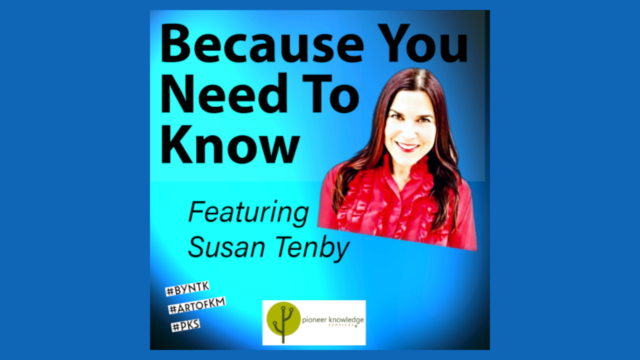
This article is part 1 of a series of articles looking at the #NotMyDebt movement from a knowledge management perspective.
I have been very stressed and got my first anxiety episode. It was very scary, didn’t know what was happening to me. no one can give me clear proof where/how this debt has occurred. Was sent a spreadsheet that made no sense, wasn’t in fortnightly breakdowns. 5 phone calls to get someone to explain what it meant. 3 couldn’t tell me, 1 had never heard of the spreadsheet. Last one just got me extremely confused. Ended up feeling very angry that I have to prove I don’t own money. [#NotMyDebt Stories]
In late 2016, just as the Melbourne spring weather was turning nice and sunny and some shops were putting up the earliest Christmas decorations, I started stumbling across tweets on Twitter that I read with alarm. They were complaining that the government was sending out debt notices to people who were, or formerly had been, on welfare payments. The debt amounts ranged from hundreds to thousands of dollars, large numbers of people were affected, and many of them were shocked and distressed not only at the amounts that had to be repaid, but also at the fact that many of these people believed that the debts had to be a mistake. Australia’s social security system requires welfare beneficiaries to report any sporadic income they get to Centrelink, the government department that oversees such matters, so that their welfare payments can be adjusted fortnightly. Most of the Tweeters were absolutely sure that they had always declared income honestly and accurately and that they should not have to pay anything back.
What was going on?
The government is using a computer algorithm to identify overpayments, or ‘debt’, by matching fortnightly Centrelink reporting periods to annual income from the Australian Taxation Office and looking for discrepancies.
They’re going back at least 7 years, and anyone who has earned any income in the same financial year that they also received any payment from Centrelink is at risk of getting a ‘debt’.
But how can they match fortnightly reported earning to an annual amount?
The answer is simple, but stupid: they take your total financial year earnings and divide that by 26.But what if I was only working part of the year, or not working regular hours, or…
Well, exactly. It’s leaving people with often massive debts, and no reliable advice from Centrelink about how get an appeal. [#NotMyDebt – the Issue]
The above explanation of what has commonly become known in Australia as robodebt can be found on the #NotMyDebt Website which is
… built and run by a handful of volunteers from all around Australia, some with debts and some without, united by our deep concern about the injustice of Centrelink’s robodebt fiasco and the impact it’s having on the lives of ordinary citizens. [#NotMyDebt – About]
The #NotMyDebt website and social media accounts on Twitter and Facebook were set up in response to the #robodebt issue; its main organiser, Lyndsey Jackson, dates its inception to the New Year’s long weekend, starting on 30 December 2016. Over the last (nearly) three years it has provided advice on how to appeal a debt, information on campaigns against robodebt, and a forum for affected people to share their stories.
From a knowledge management perspective, #NotMyDebt is a fascinating case study of a movement coordinating various forms of knowledge and information and the diverse community who has provided that information. It supports the disadvantaged and distressed, drives advocacy, and provides space for online communities to discuss ethics, governance, policy, and process.
At time of writing, #NotMyDebt has collected over 1220 stories of lived experience of being slapped with a robodebt – a staggering amount, albeit a fraction of the many thousands of people so far affected by robodebt. Many of the stories talk about the deleterious effect of having a lack of knowledge when it comes to tackling robodebt, including not understanding how a debt could have possibly been accrued in the first place and then struggling to find out how to appeal the debt. This is made all the more difficult as Centrelink’s processes tend to be frustratingly opaque or inefficient.
the lack of information provided , the verbal contradictions of staff, refusal to provide requested information about the debt. I feel under a conspired attack. [#NotMyDebt Stories]
How do you feel about the way the Government has handled this process? They have been actively obstructionist in every way. The appeal system is murky, vague and difficult. [#NotMyDebt Stories]
Community builder and digital strategist Lyndsey Jackson founded #NotMyDebt and then convened the volunteers that kept the movement going (and it is still going – people are still receiving debt notices). I recently interviewed her about the knowledge management practices that underpinned #NotMyDebt.
ML: “Perhaps you’d like to chart how you got #NotMyDebt to this point. How did the idea originate?”
LJ: “I guess the fact that #NotMyDebt is at this point as, I guess, a structure or a group of community people, is that those people are still around. And they still have energy for it. When I started it… I was aware that we were creating some digital infrastructure, like a website and social media accounts, and was sort of thinking that it may be that an organization might take that over at some point. But there’s been enough volunteers that have just sustained it and kept it going. So it’s really because of them. People certainly still need the support. And there hasn’t been any sort of consumer focused group that’s really been able to step in. But I guess the broader conversation is much, much bigger than the small piece that #NotMyDebt fills which is really interesting and exciting.
I thought there were enough ingredients in place to at very least start to build a website. Originally it was about curating information, news, blog posts, things like that, and just starting to put (information) in one central place. To see if we could break down what it was that was happening. And then the stories… I could see people sharing their stories on social media and I thought if we got 20 stories we’d end up with a bit of an interesting mix of how people are being affected, but I think we are at about 1200 (it’s actually 1231 at time of writing). And of that over 300 of those came through in that first month or so of the website… we were really active on social media – if someone was talking about it on Facebook or Twitter, we would say, ‘can you share your story here?’ So there was a lot of asking people and saying: ‘your knowledge is valuable, your insights valuable. Can you please share it?’”
As mentioned above, this collecting and sharing of stories was one of the primary forms of knowledge work undertaken by #NotMyDebt. The stories are a powerful strategy for advocacy against robodebt – it’s impossible to read them without feeling concerned and moved. By collecting them on the website and then sharing them via social media to generate broader community awareness and dialogue, #NotMyDebt demonstrated a value for a form of knowledge – anecdotal accounts of lived experience – that is maybe discounted in favour of more formally framed information by some. However, the effectiveness of #NotMyDebt has also rested on being able to curate and disseminate technical information as well. This has been done against the backdrop of an issue that was badly explained to the community by its government sponsors, and technically complicated to explain in terms of its financial rationale and the way its underpinning algorithm worked.
Interestingly, Lyndsey opined that as an informally structured small group of volunteers #NotMyDebt could actually respond more quickly and dynamically to the evolving nature of robodebt than an organisation working within more bureaucratic structures.
LJ: (Speaking about the inception of #NotMyDebt) “I was thinking about what sort of proposal would this website be? We’ve got an issue. We don’t know what the issue is. We don’t know the full extent of where this has come from. There’s a range of layers. There’s this technical layer and there’s this administrative layer and there’s this impact layer. We can sense there’s an issue we want to unpick. We don’t know the extent. We don’t quite know what we need… there were some different things that I played around with when we were putting it together because it was a bit difficult to know. So I experimented with pulling in tweets. That’s part of why the hashtag became so important. That was one of the first things that I locked in. So we had that curated focal point, but also to potentially pull that into the website and to create more sophisticated content…
… And we would use those platforms in different ways. Twitter is a really nice one for testing out language and testing out things that might stick. And talking to that kind of peer community and seeing what works in that environment, a little bit of a trial and test space. And then Facebook is much more a slower build community. A simpler language, breaking things down… because with Facebook, if you’re going to be successful, you really need the people that are active on your page to be able to start picking up the language and do that community support and discussion themselves.”
At one stage in the interview Lyndsey talked about editing social media posts for tone as much as for context. This is a reflection of one of the challenges that #NotMyDebt faced: reaching and engaging an array of stakeholders, with varying degrees of education, digital literacy, confidence in speaking truth to power, and varying requirements for different technical information.
LJ: “Part of what I was always conscious of is what do I want people to say about these things and how do you break that language down and give it to people? And that took longer than you think, even being at the point where I could explain what robodebt was. I think now people can do it really simply and succinctly, but it did seem like this big, awkward, difficult thing to explain. And you could see that play out in the media. So even if you saw the first ABC news stories on this, you’d watch and wait for them to go that deeper into the tech and into the problem and they couldn’t, they didn’t quite have that language. And that’s really changed as well. When you’ve got people that can talk about data matching and reverse onus of proof and the problem with algorithms, and that isn’t particularly foreign or uncomfortable for people, you have done a really fast transfer of knowledge and information sharing, which is very critical with technology and digital policy or you really leave people behind.”
“There’s this technical layer and there’s this administrative layer and there’s this impact layer.” In the following articles, I report in more detail on just how #NotMyDebt found the balance between handling these layers, and how this grass roots movement has been so effective in empowering its stakeholders with vital knowledge.
Next part (part 2): A space to talk into: community building, knowledge management, and robodebt.
Header image source: © John Shakespeare, used by permission.





